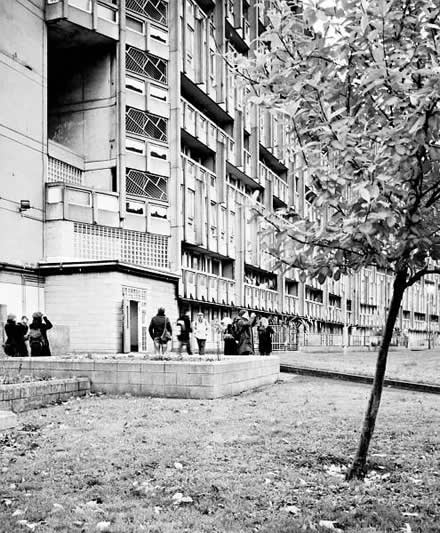
Margaret Hodge, UK architecture minister, on modernist architecture:
"When some concrete monstrosity - sorry, I mean modernist masterpiece - fails to make the cut despite having expert opinion behind it, let's find a third way. This is the 21st Century - a perfect digital image of the building, inside and out, could be retained forever."
Hodges comments come a few weeks before English Heritage will make its recommendation to Hodge whether to list Robin Hood Gardens, a housing estate in the Brutalist style, completed in 1972.
So what would Robin Hood Gardens look like in digital form?
Much of what makes brutalist architecture so polarising is that it is so uncompromising - its brooding physicality is almost the antithesis of the pure superficiality of the digital simulacra . Brutalist buildings don't ask to be liked, and as Amanda Baillieu says in her BD editorial, the Robin Hood Gardens estate "is not an esay place to love". Much of their appeal (or 'monstrosity') comes from the raw qualities of concrete, what Le Corbusier called the béton brut, with the patina given by years of staining, weathering and abuse. Can this uncompromising materiality ever be represented in cyberspace?
As can be seen from many recent computer games, virtual environments are getting better at representing the dirt in the cracks of the real world, creating imperfect alternate futures. There's no reason why digital architectural models cannot move beyond the shiny plasticity of most of todays walk-throughs and fly-bys to show something more visceral and down at heel, representing the ravages of time, weathering and unsocial behaviour.
In some ways, a digital simulation of a project may be a more accurate representation of it's original aims. Robin Hood Gardens was never used or inhabited the way that the Smithsons intended. Inevitably it became filled with low-income families, as previously mentioned about Park Hill: "sink social housing for the dispossessed, the rootless and the shiftless".
Simon Smithson, the son of architects Alison and Peter Smithson, recalls the early days of Robin Hood Gardens in an interview at BD online:
I think it became obvious soon after the families moved in, and we went to see it. They moved in problem families from the outset, and when we talked to the warden and he showed us that the old peoples' centre that had been smashed up and had to be locked, it shook my father to the core.
But what I remember as a child is how modern the flats were. They were big, light and had central heating, which we didn't have at home. The flats were well built and the detailing was of a quality you simply don't see today. The way the acoustic problems were dealt with was a tour de force.
Given that RHG, if saved from demolition, will never to be restored to it's pristine original state, and will need to be remodelled and adapted to new uses, there is a strong case that a digital archive may be a more accurate preservation of the original building. Imagine a comprehensive digital archive of Robin Hood Gardens, available online with access for all, with drawings and documentation, photographs of the building tracing it's troubled history. Combine this with a collection of state-of-the-art 3D models, available for download under a Creative Commons licence, and including models capable of being experienced, navigated and inhabited with the latest immersive technologies, would be a fine legacy for the Smithson's endeavour.
Inevitably, the more people learn about Robin Hood Gardens the more keen they will be to visit it, to experience it in real life, which is why I support the listing and revitalisation of RHG. But it cannot be preserved as a monument, a shrine to Brutalism - it must be made to work as a building, a place.
Margaret Hodge has backed herself into a corner with her comments. She cannot now do nothing. She must either agree to list Robin Hood Gardens, or commit to a National Digital Architecture Archive. It is my passionate hope that she does both.
Previously:
